610 Search Results for visual support
October 25, 2012
by Robin Parker -

For AAC Awareness Month, we would be remiss if we did not think about literacy. It is a form of communication and language that supports AAC use. Sometimes literacy is difficult for our students, other times it is actually easier and it helps conversational communication and even natural speech. Either way, reading, writing, talking, and listening (understanding) are all modalities of language. There are so many great resource lists for supporting literacy: Jane Farrall’s Letter of the Week: Resources for Older Students, Spectronics Apps for Literacy Support, Melissa Taylor’s 24 Educational iPad Apps for Kids in Reading and Writing, and 25 Great Children’s Apps to Stimulate Literacy, Learning, & Creativity just to name a few. We wanted to share a few additional resources for literacy with general education apps that approach reading through fun with words. And any literacy discussion could not be complete without some seriously great literacy information, theory, and supports... [Read More...]
October 24, 2012
by Carole Zangari -
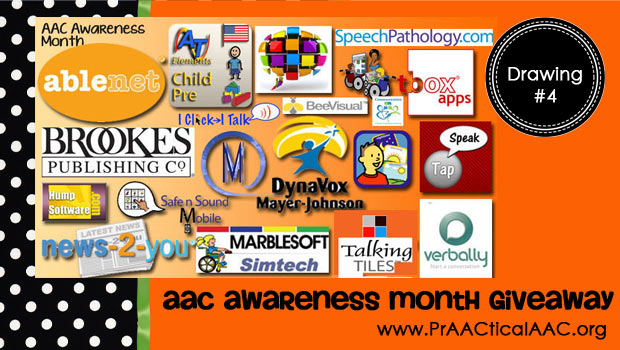
It’s been an exciting AAC Awareness Month! There were 25 lucky winners in the first two drawings and earlier today we drew the names for the third round. The winners for Drawing # 3 are Tanya Keller Scott (#473), Rachel Berry (#266), Carrie Walls (#9), Felicia Moore (#566), Diane Saunders (#34), Jillian Mayo (#164), Juliana Escobar (#425), Amy Vinson Taylor (#138), Allyssa Lucas (#323), Katrina Stebbins (#88), Kristina Frenzel (#480), Jennifer Schroeder (#510), Christine Cobb (#587), Lauren Enders (#53), Mark Neely (#291), Cassie Cann (#213), Amy M (#182), Cassandra Stafford (#366), Monica Venezia (#547), Lizzie Feldman (#579), Melissa Nicole (#364), Erin Finnegan (#434), and Kia Hughes (#383). Congratulations to the winners! Our 4th and final drawing promises to be the best one yet. Please join us in giving virtual round of applause to these generous companies: Ablenet, Inc Abilipad Alexicom Avaz BeeVisual Dynavox/Mayer Johnson Gail Van Tatenhove, PA Hump Software iClick iTalk MarbleSoft Mozzaz News-2-You Patient Provider Communication Paul H. Brookes Publishing Company RJ Cooper Safe N Sound Mobile Say It with Symbols... [Read More...]
October 20, 2012
by Carole Zangari -
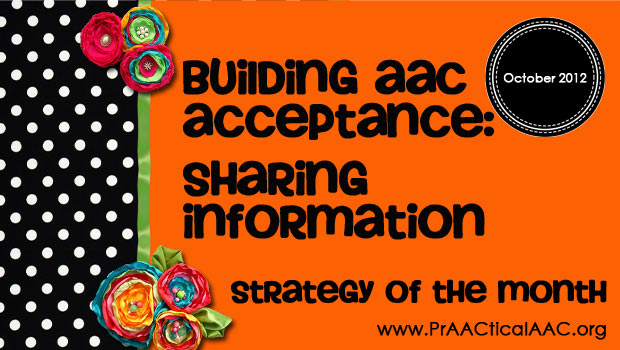
While there are certainly attitudinal barriers to AAC, it’s also true that sometimes the people we are trying to influence just need more information. Sounds simple, right? Not exactly. Especially when we consider these factors. Adult learners prefer to chart their own course to learning new things rather than have others lay that out for them. Our behaviors are most likely to change when we discover solutions for ourselves, as opposed to following directions that others give to us. We have a limited amount of time to guide others to the information they need. Here are some things that have worked for us. Develop a bank of educational materials that pertain to the topics that you face most often in your clinical work. Create resource files for general topics, such as the empirically-supported benefits of AAC, and specific topics, such as the evidence base for using SGDs with individuals who... [Read More...]
October 17, 2012
by Carole Zangari -
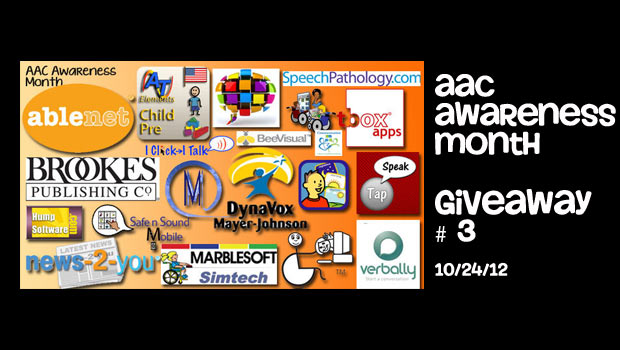
We have been having a wonderful time with our prAACtical celebration! So far, we’ve awarded prizes to 25 different AAC-lovers, thanks to the generosity of a lot of companies and individuals. What a terrific group! Ablenet, Inc Abilipad Alexicom Avaz BeeVisual Dynavox/Mayer Johnson Gail Van Tatenhove, PA Hump Software iClick iTalk MarbleSoft News-2-You Patient Provider Communication Paul H. Brookes Publishing Company RJ Cooper Safe N Sound Mobile Say It with Symbols Silver Lining Multimedia SpeechPathology.com TapSpeak TherapyBox/TBoxApps Verbally How Does It Work? We use Rafflecopter to administer the giveaways. All entries made through there will be counted toward our drawings. We’re holding four drawings spaced throughout the month, and will draw two more sets of winners, one on October 24 and the other on October 31. Prizes are randomly assigned to each winner. We’ll send an email to each one letting them know what they’ve one. The winners will have... [Read More...]
October 10, 2012
by Carole Zangari -
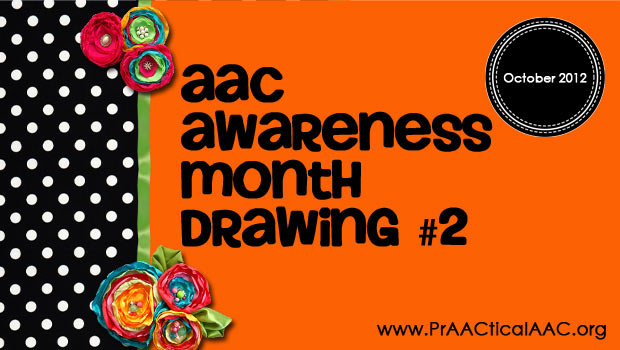
We’re bAACk with another giveaway to celebrate AAC Awareness Month, made possible by the very generous people at the organizations listed below: Ablenet, Inc Abilipad Alexicom BeeVisual Dynavox/Mayer Johnson Gail Van Tatenhove, PA Hump Software iClick iTalk MarbleSoft News-2-You Patient Provider Communication Paul H. Brookes Publishing Company RJ Cooper Safe N Sound Mobile Say It with Symbols Silver Lining Multimedia SpeechPathology.com TapSpeak TherapyBox/TBoxApps Verbally How Does It Work? We use Rafflecopter to administer the giveaways. All entries made through there will be counted toward our drawings. We’re holding three additional drawings this month, and will pick winners on October 17, 24, and 31. Prizes are randomly assigned to each winner. We’ll send an email to each one letting them know what they’ve one. The winners will have 5 days to respond to our email. You’ll need to be a good sport to play along because we’re not going to get... [Read More...]
October 1, 2012
by Carole Zangari -
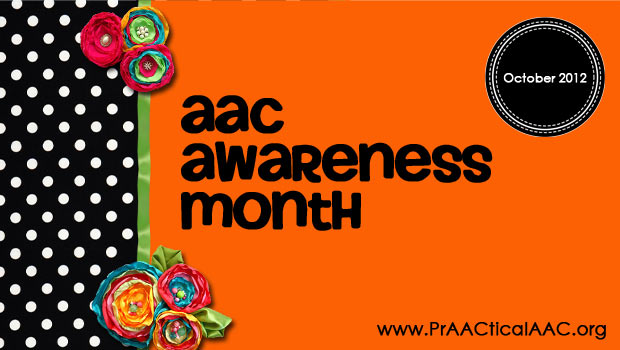
It’s a prAACtical celebration! Thanks to the generosity of a lot of companies and individuals, we’re hosting some AAC Surprise Giveaways in honor of AAC Awareness Month. As you can see, we’ve had lots of prizes donated from these wonderful folks: Ablenet, Inc Abilipad Alexicom BeeVisual Dynavox/Mayer Johnson Gail Van Tatenhove, PA Hump Software iClick iTalk MarbleSoft News-2-You Patient Provider Communication Paul H. Brookes Publishing Company RJ Cooper Say It with Symbols Silver Lining Multimedia SpeechPathology.com TapSpeak TherapyBox/TBoxApps How Does It Work? We use Rafflecopter to administer the giveaways. All entries made through there will be counted toward our drawings. We’re holding four drawings spaced throughout the month, and will draw winners on October 10, 17, 24, and 31. Prizes are randomly assigned to each winner. We’ll send an email to each one letting them know what they’ve one. The winners will have 5 days to respond to our email.... [Read More...]
August 22, 2012
by Carole Zangari -

We tried to be patient. We really did. We tried to wait until we had the new venue for our site all figured out and ready to go, but the truth is, we missed blogging and hated the thought of going a few more weeks without being able to post. So we decided to reactivate our old site for the time being and post occasionally to this site. Pardon our dorky look, please. In case you missed these on Facebook, here are are a couple of things we shared in the past few weeks: Lemonade: http://screencast.com/t/xaFcbxySW Building Classroom Participation: http://www.screencast.com/users/CZee/folders/Jing/media/15818f72-c49f-4da6-a12d-e52250794234 PrAACtical Alert: Online Trainings: http://bit.ly/NZ9HYT COCOA: http://www.edutecher.net/educlipper/index.php?shareImgid=2478 AAC Rating Scales: http://www.edutecher.net/educlipper/index.php?shareImgid=2499 and http://bit.ly/Ocgte5 And now onto something new… Last week, I had the chance to talk with Karyn, a mom whose adorable daughter with significant vision impairment and multiple disabilities is entering school for the first time. As she helped... [Read More...]
August 3, 2012
by Robin Parker -
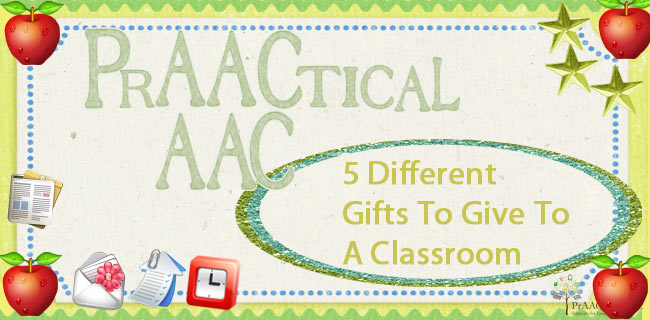
We can’t believe there are only a few weeks left before school starts. We have been talking to teachers, scheduling school and teacher trainings, helping to prepare communication dictionaries, and making recommendations for classroom materials. We realized that there are some bigger resources that would help MANY students in a classroom and even a school. These are gifts that might cost a lot of money ($150 or more) or a lot of time to set up (but are free). We realized that these would be great gifts for a parent group (PTA’s/PTO’s) or charitable organizations/foundations to give to a teacher, classroom, or school that has students who use AAC even though the gift will benefit ALL learners. Give a gift before school starts or after a successful fundraiser. 5 Great Gifts to Give to A Classroom News-2-You – A symbol based current event newspaper that allows ALL students to talk... [Read More...]
July 29, 2012
by Carole Zangari -
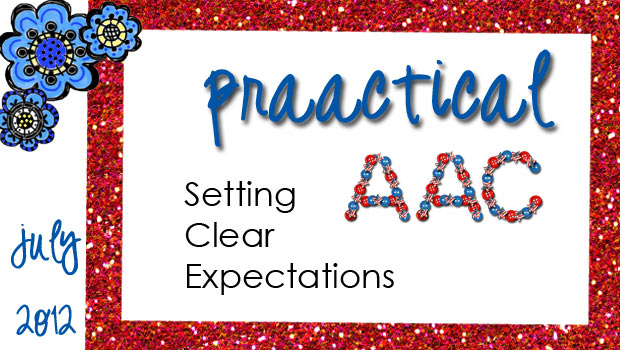
This week we return to the Geneva Centre for Autism for have two short videos from on strategies to support positive behavior. – Enjoy these explanatory videos on Clear Expectations With Visual Rules and Classroom Rules. –
June 29, 2012
by Robin Parker -
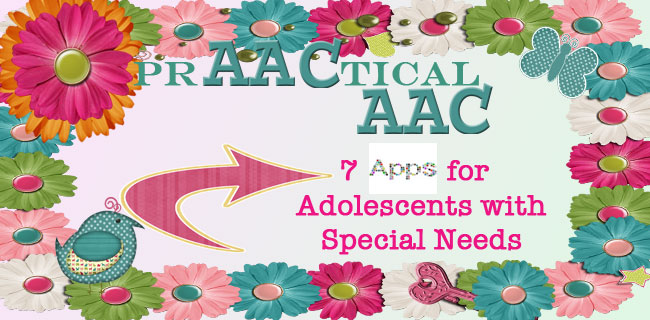
We have ‘grown up’ with many of our students and their families. We have learned from the students themselves, their parents, siblings, teachers, and their other SLP’s, OT’s, & ABA therapists. So when we recently met with a terrific mom and contemporary ABA therapist, we needed to speak about apps for adolescents (goals and activities had been discussed previously). The student communicates and organizes herself through natural speech, the Dynavox Maestro, apps on the iTouch, & apps on the iPad. The student is now 16 and she cooks amazing food, hikes through the mountains of Switzerland, takes inventory for her school, types shopping lists, puts together scrapbooks, and does a lot more really cool things. Here is the list of apps we recommended to support her favorite leisure & literacy activities, and quest to be more & more independent. We only stopped giving more apps when ALL of us were... [Read More...]









